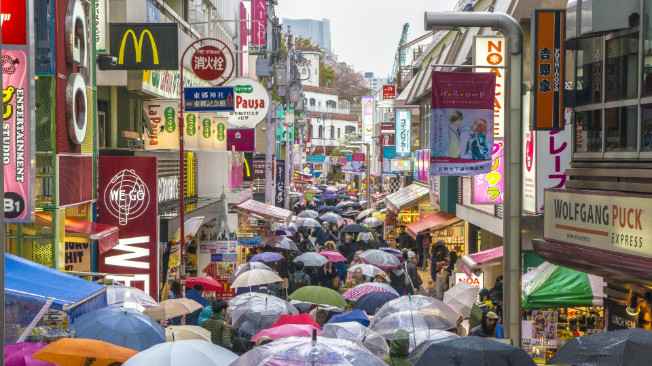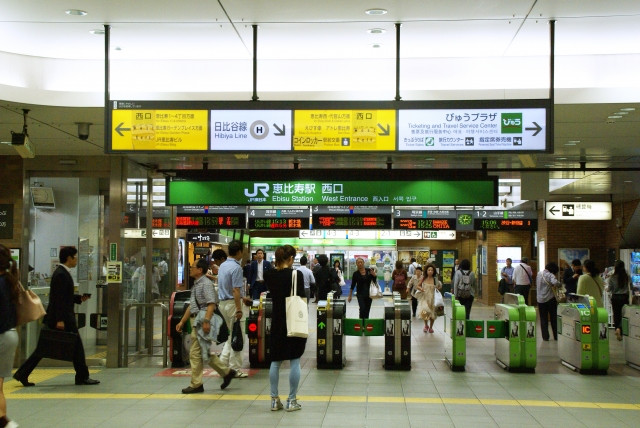Tokyo is the largest city in the world in terms of population. The capital of Japan itself is a world of its own, but how big is the city and population really? Learn more about how Tokyo got its high population and why people still decide to live there.
Facts and fascinating information about the population in Tokyo
Historical and Contemporary Facts
Tokyo was known as Edo until the year 1868, becoming Japan's current capital city. Edo was a jōkamachi (castle town) that became the political center for the Tokugawa Shogunate. Edo was then recognized as the unofficial capital of Japan after huge developments and urbanization under the rule of the Tokugawa Shogunate. Edo was later renamed as Tokyo, which means "eastern capital." Since the 17th century, Tokyo had been Japan's largest city. Furthermore, the site of Tokyo has become a prominent political center of Japan since the Edo period (1603 to 1868), which led to Tokyo's booming population, exceeding one million in the late 19th century. As Japan's political, economic, and cultural center, Tokyo is a highly urbanized and populated city.
※ History, "6 Things You Should Know About Tokyo"
The Most Populated Metropolitan Area in Japan

Tokyo is the heart of the largest metropolitan area in all of Japan called the Greater Tokyo area. The Greater Tokyo area, or 首都圏 (shutoken or capital region) as referred to by the Japanese, consists of the Kantō region of Japan and its six prefectures plus Tokyo metropolitan area, as well as Yamanashi Prefecture. Tokyo's metropolitan area is Japan's largest industrial and commercial center. Many domestic and international businesses are based in central Tokyo. The metropolitan area functions as the central commercial hub in the country, where the goods and products from across the country and the world are distributed.
Tokyo is a major transportation hub in Japan. The city is equipped with a system of railways, subways, bus lines, and highways. Tokyo holds both Shinjuku Station and Tokyo Station, holding the titles for busiest train stations in the world in terms of people per day and trains per day, respectively. The stations also operate many of the bullet train rail lines, which are essential railroad terminals for all of Japan.
In 2018, according to the Statistics Bureau of Japan, the country's population was around 126 million. This included the estimated population of the greater Tokyo metropolitan area of more than 37 million people or approximately 29.5% of Japan's total population based on the statistical data of the United Nations.
※ Statistics Bureau of Japan, Statistics, Handbook, "Statistical Handbook of Japan 2019," p.8 ※United Nations, "The World’s Cities in 2018" p. 17
Tokyo as a Global City
Calling Tokyo a large city is like calling the Tokyo Skytree tall, an oversimplification as the place, along with giants like New York City and London, stands as the leading influential global cities. Global cities simply explained are cities that have much of their industries connected at an international level acting as an essential node in the global economic system.
In the 2019 Innovation Cities Index, Tokyo ranked second as a globalized city. The rapid modernization of Tokyo, as well as the hard-working and ever-increasing population, helped it to establish a firm position in the international community. Supported by the depth of Japanese culture and various businesses, Tokyo is blooming in terms of tourism and commerce. In addition to its adaptive nature, Japan has invested generously into the rail network and trains connecting much of the country.
※ Innovation Cities Program, "Innovation Cities™ Index 2019 : Global"
Reasons Behind High Population

Many people settle in Tokyo seeking the job opportunities it offers, other work-related reasons such as companies having their headquarters in the capital, and the various facilities that are better in the city. The many prestigious universities play a crucial role as well in the rise of the city's population. Young people are also more likely to move or migrate into the city in search of work and housing, further fueling the population growth.
Writer's Pick
Effects of high population in the city
Cost of Living
Living in Japan can be expensive, especially in a highly urbanized city like Tokyo, which is periodically listed in the world's top ten most expensive cities. Living expenses are manageable, however, with a bit of planning and depending on the location and the room/location rented. The cost of car ownership and parking space are considered expensive. Still, Tokyo offers a highly efficient public transport, along with offering tourists train passes like the Japan Rail Pass. The expenses can otherwise be covered by the job which one is employed unto, depending on the agreement.
Labor force and job opportunities
Tokyo has a tremendous population, to its advantage and disadvantage, but not the entire portion of the population can be counted towards the labor force. The population of the city according to studies in 2019 were around 12 million people, and in the labor force of more than 8 million people, those that are 15 years old and older, while only around 200,000 are unemployed.
※ Bureau of Industrial and Labor Affairs Tokyo Metropolitan Government, "Industry and Employment in Tokyo A Graphic Overview 2019" p. 30
Tokyo's increasing population has created a bigger need for housing and encourages many institutional and individual investors to invest for rental income. Tokyo houses numerous industries and businesses and boasts an especially large concentration of corporate headquarters, creating positive feedback in the economy, which will be advantageous for both local and foreign workers. Approximately 75% of the foreign businesses in Japan have established an office in Tokyo.
※ Japan External Trade Organization, "Tokyo, the city that leads businesses to success"
Benefits of living in Tokyo

Constant Infrastructure Development
Japan has long been known for creating exceptional infrastructure projects. The country maintains an advanced infrastructure for its cities and regularly upgrades and maintains them. Many real estate projects and infrastructure improvements are also underway for the older parts of the city to modernize and renew the landscape, ultimately making Tokyo easily accessible and more attractive.
Clean and Convenient
Tokyo is a great place to live. Despite the hefty population, Tokyo is clean. Most of the time, people recycle garbage, which is very easy because most public trash bin areas are divided into different categories like cans, plastics, non-combustibles, and combustibles. Public transportation is easily accessible and is excellent in terms of service and quality. Trains and buses are usually the main methods of transportation for commuters. Cycling is also known as a cost-effective and convenient method to travel around the city. Taxis are available near train stations, and it is an effective way to move about once trains and buses stop operating around midnight.
Despite the high urbanization, Tokyo carefully maintains historical and cultural sites, ancient courtyards, and castles. Tokyo is full of entertainment as well and has a low crime rate.
Summary

As Japan's center of business and commerce, Tokyo emerged as one of the most popular and most populated cities around the world. Harboring the title as a global city, Tokyo is home to first-class business firms, international business organizations, and entities, attracting foreign investors from the different parts of the globe. These conditions stimulated the exponential growth of the city's population, which gave birth to today's current urban demographics - a demographic status that ultimately leads to their economic success.



































